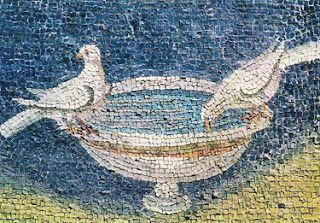For what reason is stamnos andGreek Vase Plat used?
This polished Attic stamnos (plural: stamnoi) was used to combine water and wine in ancient Athens. This red-figure cup, which gets its name from the fact that the figures retain the natural color of the clay, is highly prized not only for its aesthetic worth but also for the fact that it depicts either Greek ladies or maenads, female participants in ceremonies honouringDionysos, the god of alcohol.
● The Plate or Geometric Greek Vase Plat with 20cm, painted with Geometric art from the Ancient Greek Geometric Period, is a beautiful addition to any wall.
● The period of Greek art known as "geometric art" thrived at the end of the "Greek dark ages," between the years 900 and 700 B.C. It is distinguished from other phases of Greek art primarily by the prevalence of geometric themes in vase painting.
● Athens served as the movement's epicenter, and it was from the city where it originated that the style spread across the Aegean's commercial centers. The vases were put to use for a variety of functions or purposes within Greek civilization, including but not limited to serving as burial vases and symposium vases.
● The Apulian Red Figure Pelike jar is
whole, however the glaze has flaked in a few places (most notably on the lip and at the joints of the handles). Around the vessel, there is a buildup of incrustation. The foot is shaped like a disk with two degrees of rotation, and the largemouth features a torus lip.
Conclusion: So, A laurel wreath may be seen on the neck of the bottle, between the handles, and to the left of the reserved lines. On the reverse, the bottom section of the design is concealed by a thin coating of glaze. Below the figural scenes is a meander between short reserved lines. On one side of the vase, a young guy presents a lady with two eggs that he has just laid.




Comments
Post a Comment